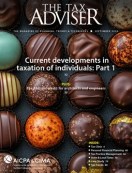- news
- EMPLOYMENT TAXES
Social Security wage base and COLA announced for 2026
Related
IRS outlines details for Trump accounts
New regs. reshape 1% stock buyback tax, drop funding rule
IRS approves medical deduction for IVF, denies it for surrogacy
TOPICS
Individual taxable earnings of up to $184,500 annually will be subject to Social Security tax in 2026, the Social Security Administration (SSA) said Friday.
The amount, an increase from $176,100 in 2025, is the wage base limit that applies to earnings subject to the 6.2% OASDI tax (old age, survivors, and disability insurance). At or above the wage base limit, the employee and the employer each will pay $11,439 tax, an increase of $521 for each party in 2026.
The Medicare hospital insurance tax of 1.45% each for employees and employers remains unchanged for 2026 (it has no wage limit). Individuals with earned income of more than $200,000 ($250,000 for married taxpayers filing jointly and $125,000 for married taxpayers filing separately) pay an additional hospital insurance tax under Sec. 3103(b)(2) of 0.9% of wages with respect to employment (also unchanged).
Self-employed individuals pay self-employment tax equal to the combined OASDI and Medicare taxes for both employees and employers (i.e., 12.4% of net self-employment income up to the OASDI wage base plus 2.9% in Medicare taxes on any amount of net self-employment income, with an offsetting above-the-line income tax deduction of one-half of the self-employment tax (also unchanged)).
COLA adjustments
The SSA also announced Friday a cost-of-living adjustment (COLA) of 2.8% for both Social Security and Supplemental Security Income (SSI) benefits beginning in January 2026. The Social Security benefits COLA, which is based on the consumer price index, rose 2.5% a year ago and 3.2% two years ago.
In 2026, retirees receiving Social Security benefits will be able to earn $65,160 in the year they reach full retirement age before their benefits are reduced by $1 for every $3 in earnings over the limit. That is an increase from $62,160 in 2025.
Beneficiaries younger than full retirement age can earn up to $24,480 in 2026 before their benefits are reduced by $1 for every $2 in excess earnings, up from $23,400 in 2025.
The maximum Social Security benefit for a worker retiring at full retirement age will increase to $4,152 per month in 2026, up from $4,018 in 2025.
— To comment on this article or to suggest an idea for another article, contact Kevin Brewer at Kevin.Brewer@aicpa-cima.com.














